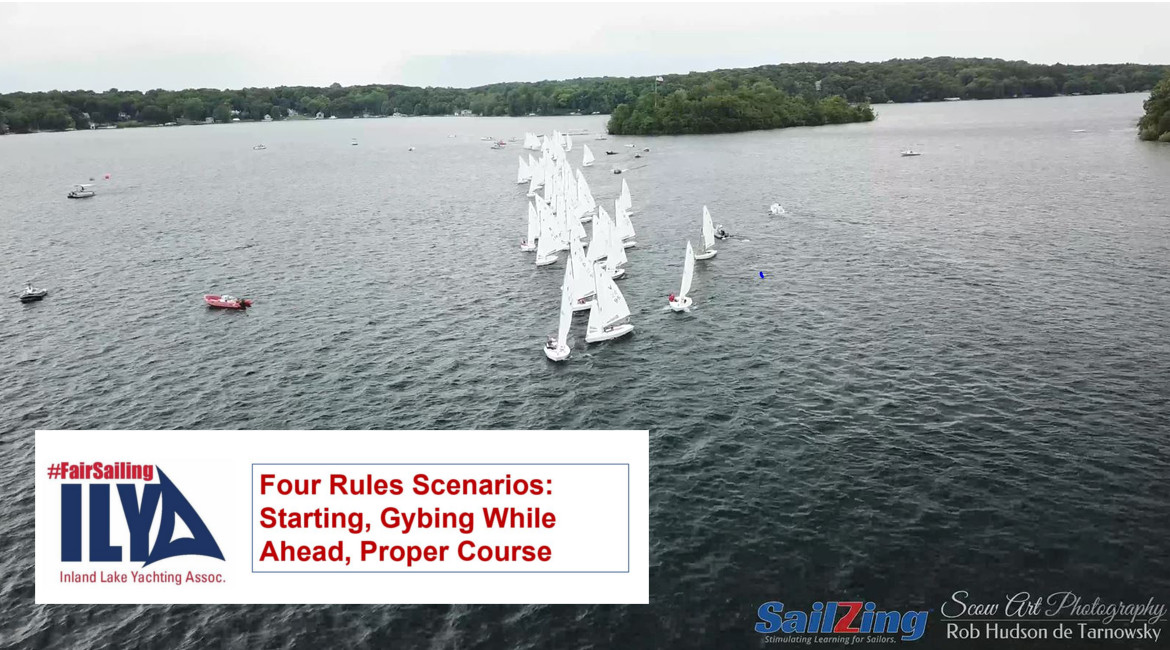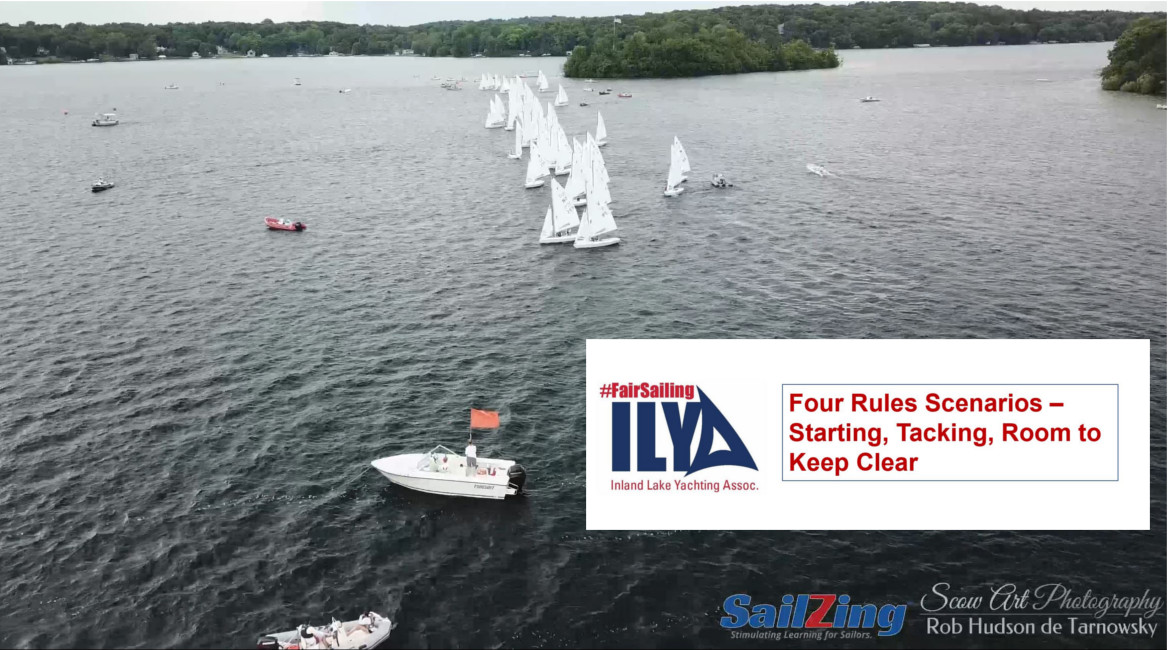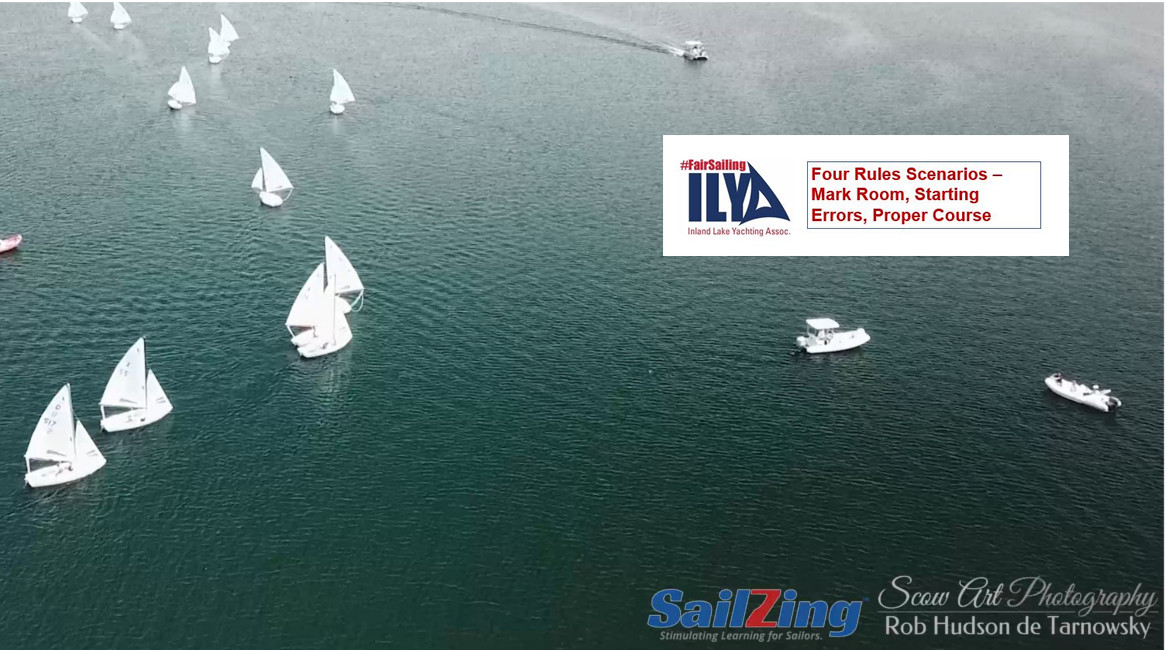The Inland Lake Yachting Association (ILYA) is building on its 2018 #FairSailing initiative to increase the level of rules knowledge and compliance. The initiative includes a Racing Rules of Sailing (RRS) presentation for clubs and sailing schools to use, weekly rules scenarios articles, a rules quiz, streamlining the protest process, and incentives for club and individual participation.
In 2018, we covered the basics of the RRS. In 2019, we’ll address more complex scenarios with new articles and a second-level quiz. We’ll use material from Dave Perry’s 100 Best Racing Rules Quizzes, as well as the World Sailing Casebook. Thanks to Dave for granting permission to use his material!
We’ll publish the weekly ILYA rules scenarios articles here. You can also receive the weekly articles directly from the ILYA by subscribing to ILYA’s Scowlines.
Rules Scenarios #2 covers a combination of the rules of Part 2, Sections A and B. To review the basics of the rules, see the SailZing Part 2 Racing Rules category.
Scenario 1 – Don’t Go in There
Two boats, L (a leeward boat) and W (a windward boat), are approaching the right-hand end of the starting line, a 30-foot powerboat, to start an upwind leg. Both boats are beam reaching, with L on a course to pass one length to leeward of the race committee boat. Twenty seconds before the starting signal and when two lengths from the race committee boat, L hails, “No room! Don’t go in there!” to W. Both boats hold their courses until W is overlapped to leeward of the race committee boat. At that point L luffs and W makes contact nearly simultaneously with both L and the committee boat. There is damage to the race committee boat but not serious damage. Both boats protest each other. You are on the protest committee; how would you decide this? (From Perry, Quiz 16)
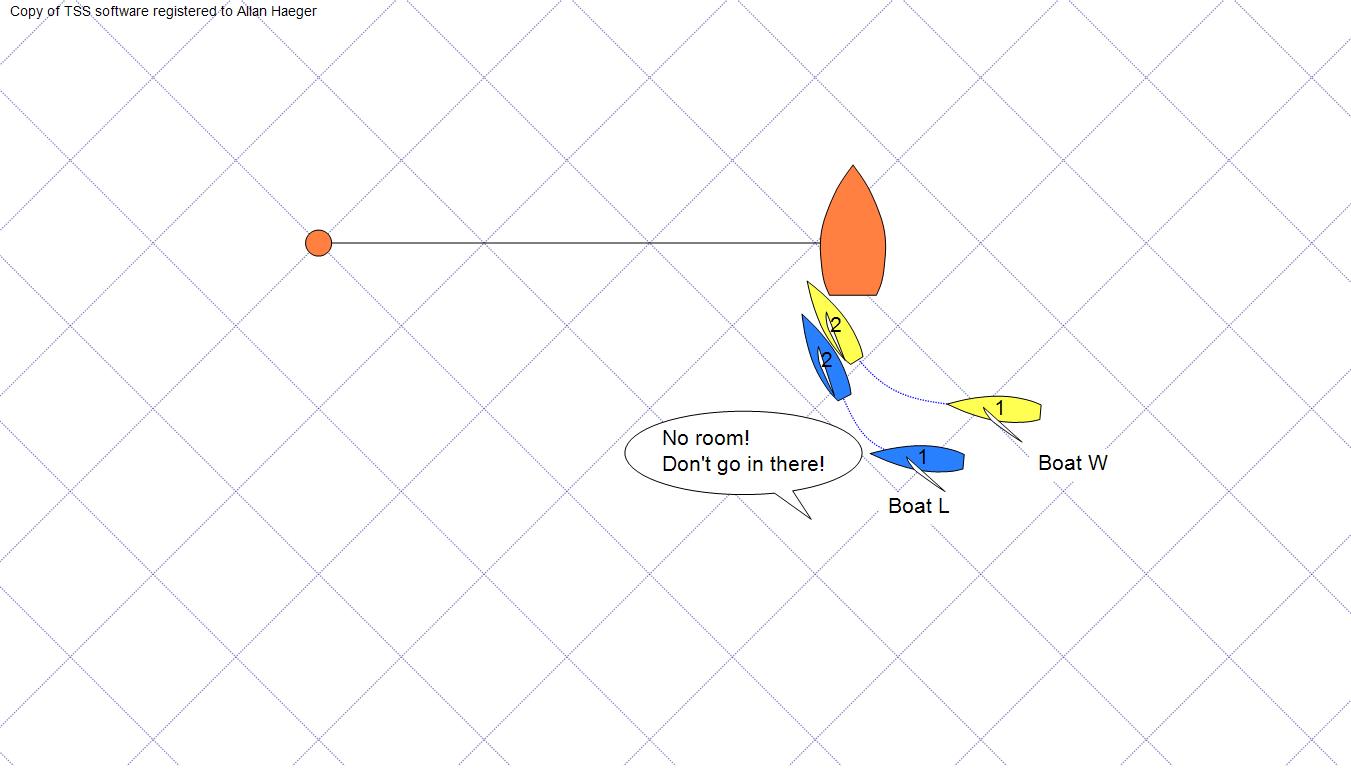
Click here for answer
Scenario 2 – Gybing While Ahead
In a fleet race, Boats X and Y are running by the lee, both on port tack. X is five feet clear astern of Y. Suddenly Y swings her boom across and the mainsail fills on her port side. Just before Y’s mainsail fills, X luffs sharply and just avoids making contact with Y’s transom. X protests Y for gybing too close. You are on the protest committee; how would you decide this? (From Perry, Quiz 19)
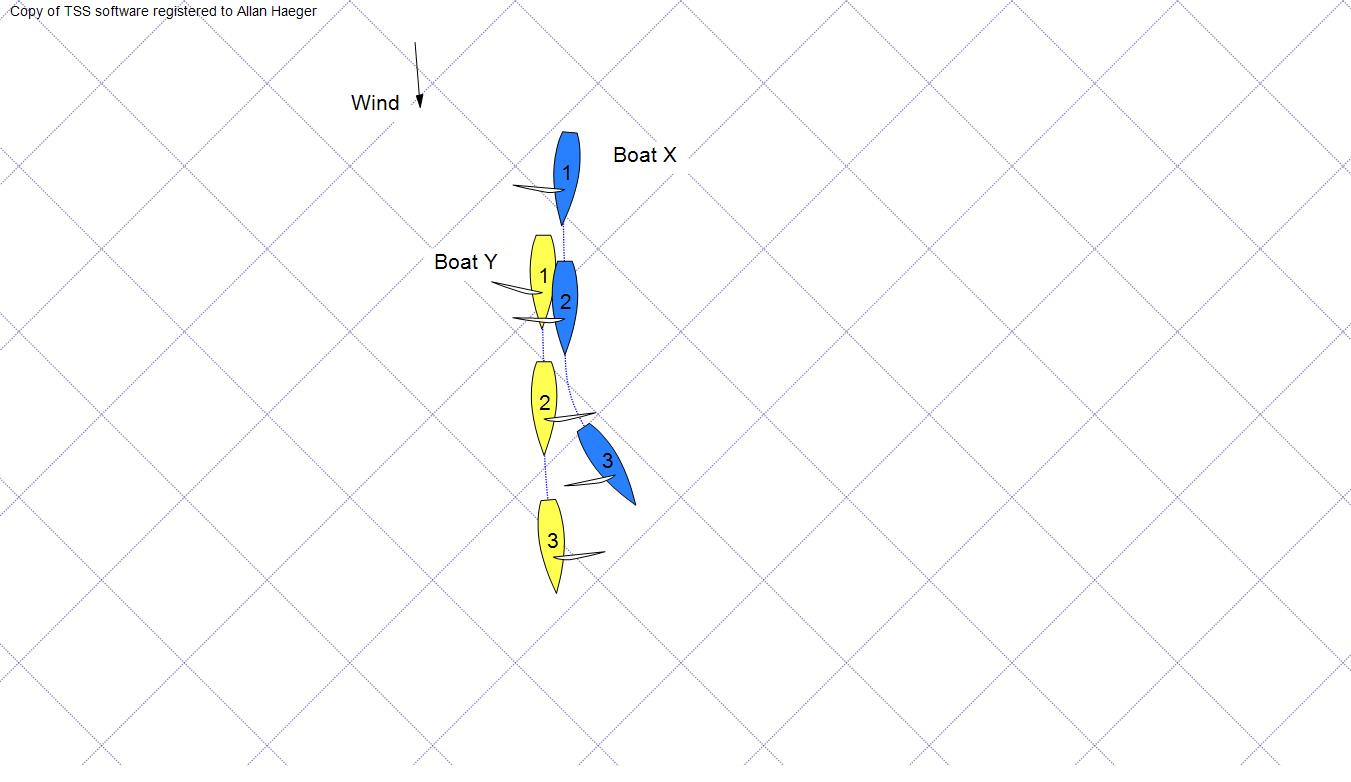
Click here for answer
Scenario 3 – Proper Course #1
Boats A (clear ahead) and B (clear astern) are running downwind on starboard tack and are over six lengths from the leeward mark. A is so close to B that, if she were to gybe onto port tack, A could neither cross in front of B nor luff up across B’s transom. At no point while the boats are on starboard tack are the boats overlapped. B continues sailing well past the port-tack layline to the mark, despite A’s repeated hails that B is sailing above her proper course and that she must gybe. Finally, A flies her protest flag and B gybes. Both boats approach the leeward mark from well outside the zone on tight reaches. A protests, claiming that B sailed above her proper course when she did not have luffing rights under rule 17, On the Same Tack; Proper Course. You are on the protest committee; how would you decide this? (From Perry, Quiz 21)
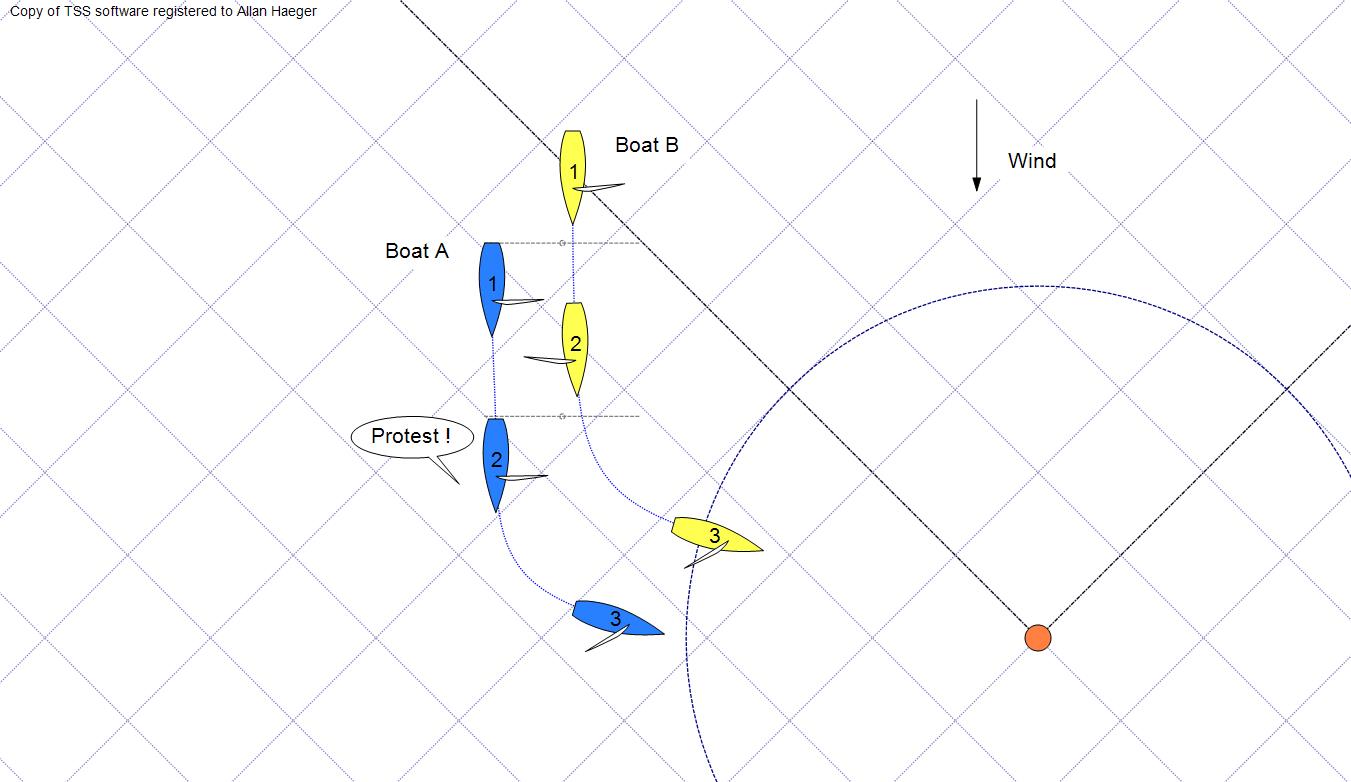
Click here for answer
Scenario 4 – Proper Course #2
Two boats, L (a leeward boat) and W (a windward boat), are approaching the left-hand end of the starting line, which is a 16-foot powerboat. When W is three lengths from the end of the line, L becomes overlapped on W to leeward from clear astern. There are six seconds to go before the starting signal. L slowly luffs and W keeps clear. As L reaches close-hauled, the starting signal is made. L is a boat length from the powerboat and will not clear it sailing close-hauled. She luffs to head to wind, shooting up and around the powerboat, and then bears away to a close-hauled course. W keeps clear throughout, and protests L for sailing above close-hauled after the starting signal. You are on the protest committee; how would you decide this? (From Perry, Quiz 25)
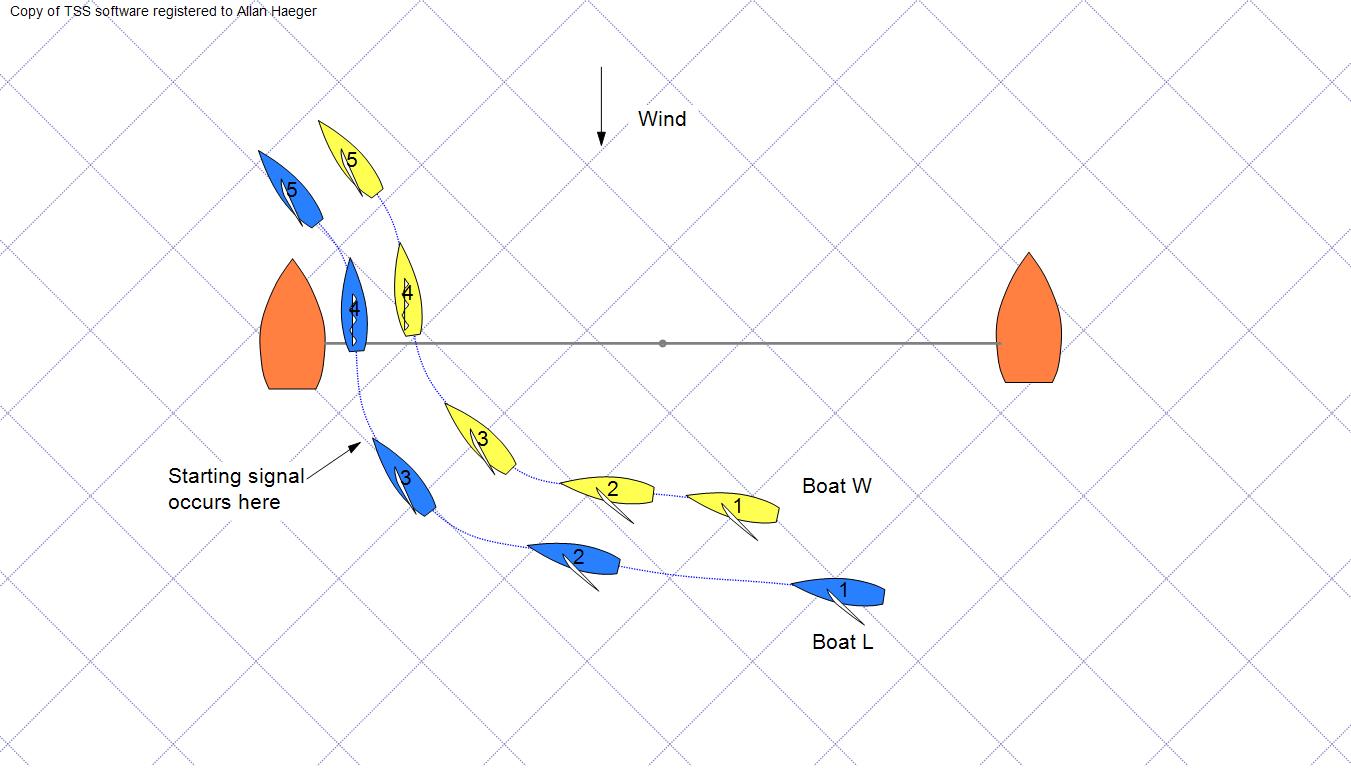
Click here for answer

